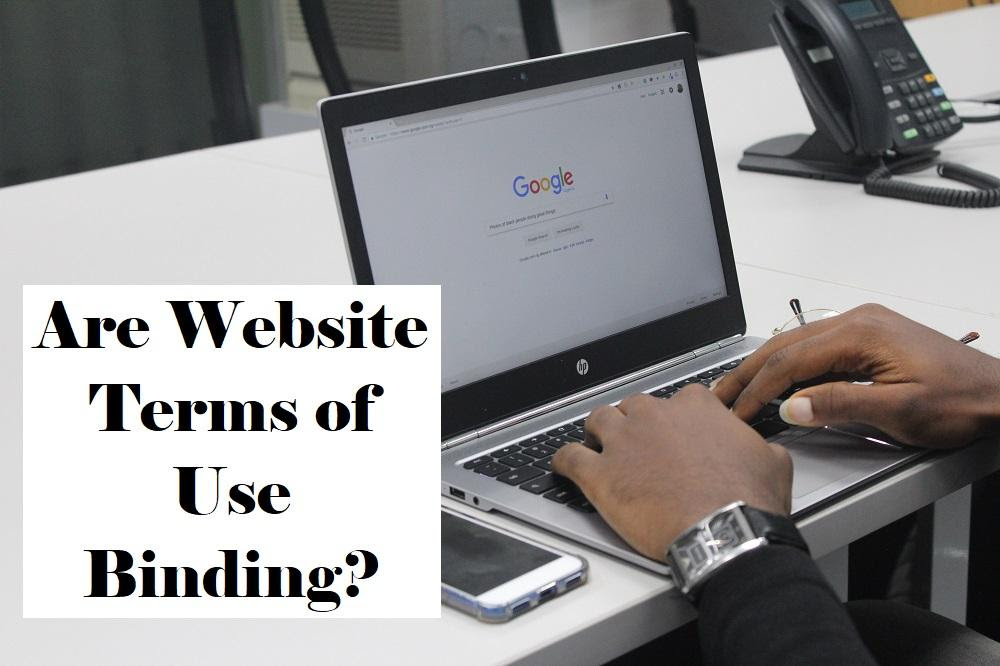On April Fool’s Day many years ago, an online gaming store modified its Terms of Use, adding the following clause:
By placing an order via this Web site…, you agree to grant Us a non transferable option to claim, for now and for ever more, your immortal soul. Should We wish to exercise this option, you agree to surrender your immortal soul….”
Because only 12% of purchasers ticked the “opt out” box that day, GameStation figured that was the percentage of purchasers who actually bothered to read the Terms of Use. More recent surveys have shown that fewer than 10% of those surveyed say they read website terms.
Should website users be reading them? Can website operators skip posting all those policies no one reads? Are these terms even enforceable? The answer is complex.
Courts generally uphold the validity of “click-through” agreements, since website users have to affirmatively agree to the terms, usually by checking a box and clicking the “Agree” button.
If the terms aren’t clearly brought to the attention of users, however, they won’t be enforced. Affirmative consent of the website user is required, and continued use of a website or purchasing items through the website isn’t considered consent.
A recent Ninth Circuit case involved consumers who had used the defendants’ websites but failed to see notices in fine print stating “I understand and agree to the Terms & Conditions which includes mandatory arbitration and Privacy Policy.”
On each of the defendants’ websites, the notice was in tiny grey print. “Terms & Conditions” and “Privacy Policy” were underlined but appeared in the same tiny grey font, not in a different color as is typical for hyperlinks.
On one site, the notice was sandwiched between brightly colored graphics, a button labeled “Confirm your ZIP Code Below” and a prepopulated zip code text box, and a button saying, “This is correct [referring to the consumer’s zip code], Continue!>>”
The notice on the other website was sandwiched between buttons labeled “Male” and “Female” (part of a long series of questions for the website user) and “Continue>>.”
After reviewing the relevant webpages, the court held that the websites did not provide “reasonably conspicuous notice of the terms and conditions” because the text disclosing the existence of the terms and conditions was “the antithesis of conspicuous.”
The notices were printed in a tiny grey font, much smaller than the font used around them, and the other visual elements of the webpages, including color, drew the users’ attention away from the notice.
Further, noted the court, the design of hyperlinks must put users on notice of their existence. That is, said the court, consumers “cannot be required to hover their mouse over otherwise plain-looking text or aimlessly click on words on a page in an effort to ‘ferret out hyperlinks.’”
In addition, clicking the “Continue” button didn’t manifest unambiguous assent, because there was no indication of the “legal significance” of clicking the “Continue” button.
In the court’s opinion, neither the notice nor the text of the button made it clear to users that clicking the “Continue” button meant they were agreeing to the terms and conditions.
The court went on to suggest that this latter problem could have been prevented by using language such as “By clicking the Continue>> button, you agree to the Terms and Conditions.”
If you have a website, follow these best practices to make it more likely your terms of use will be enforced.
• Don’t allow users to proceed with a purchase or other transaction until they’ve affirmatively agreed to the terms by checking a box that says something along the lines of “I have read and agree to the Terms of Use.”
• Website colors and other graphic elements should help ensure that users’ eyes are drawn to the relevant language.
• Those terms should be available either in a pop-up scrolling text box or via an obvious hyperlink placed near the “I agree” checkbox.
• The terms should be in a readable font and written “in plain English.”
• Make sure the user can easily print or download the terms for later reference.
• Save data related to agreements, including when the user accepted the agreement, which version of the agreement was accepted, and proof of the acceptance.
If you’re a website user, for more important transactions, you should at the very least skim the terms and conditions and carefully read those which you feel are significant for you. If you don’t understand them, confer with somebody who can assist you in doing so.
Please feel free to contact us if you have any questions or need help with issues relating to website terms of use, privacy policies, or other website policies.
Photo by Benjamin Dada on Unsplash






